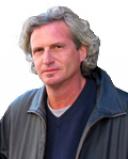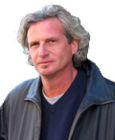Psychiatry
Death Trip
LSD was used in the early 1970s to help patients transition from life to death.
Posted October 2, 2013
The counterculture may have been fading in the early 1970s, but that did not stop some more creative individuals to come up with some different ideas to help terminally ill patients. Without a doubt, one of the more interesting was the use of LSD, a drug that had previously been given to mental patients and alcoholics as part of their therapy. A good number of these patients reportedly described the (positive) feelings of “dying” and “being reborn” while under the influence of LSD, leading some psychiatrists to believe the drug could be useful for the terminally ill. Proponents of LSD believed the drug should be used not just for therapeutic purposes but could perhaps revolutionize the way we thought about death.
Once located within the provinces of philosophy and theology, death had over the past couple of hundred years migrated to the realm of medicine, a costly trade-off for Western civilization, some argued. “Somehow in the process, we have made death another mass-produced, impersonal commodity controlled by expert providers,” thought Jerry Avorn, writing for Harper’s in 1973. Avorn was not a shaman but a fourth-year student at the Harvard Medical School, one of a growing number of health professionals who believed psychedelic drugs could possibly ease the transition from life.
The epicenter of the LSD-as-therapy phenomenon was the Maryland Psychiatric Research Center in Catonsville, Maryland, right outside Baltimore. By 1973, psychiatrists at the center had been exploring the use of LSD for the dying for a few years without much public attention. Terminal patients’ psychic anguish was as important as their physical pain, director Albert Kurland and his colleagues at the center believed, their drug of choice used in conjunction with counseling to help them achieve, as Avorn put it, “a transcendent level of awareness from which it may be possible for them to deal more easily with impending death.” The intersection between dying and LSD went back to the early 1960s, when Eric Kast, a physician at the University of Chicago Medical School, found that the largely unknown drug had powerful pain-relieving properties. Kast administered the drug to terminal patients purely as an analgesic, thinking it was superior in some ways to opiates. Kast noted a distinct side effect of LSD, however, as he mentioned in an article published in 1964:
In addition to pain relief, these patients displayed a particular disregard for the gravity of their situations, and talked freely about their impending death with an affect considered inappropriate in our western civilization but most beneficial to their own psychic states. This approach to their disease was noted usually for longer periods than the analgesic action lasted.
Just a year later, a staff member at Catonsville, diagnosed with untreatable cancer, volunteered to become the first terminal LSD subject. The group considered the results positive and, over the next decade, cooked up quite an eclectic therapy with psychedelics as the main ingredient. Psychoanalysis, music, neuropharmacology, Buddhist cosmology, existential philosophy, and Western medicine all went into the therapeutic mix, with the results designed to, per Avorn, “guide the dying patient through his suffering and, ideally, into a level of transcending awareness.”
Drug sessions at Catonsville (which followed conventional psychotherapy to help patients confront their mortality) were a lot more structured than those of recreational LSD users. In the morning, the therapist assigned to the case, along with a specially trained nurse, arrived in the terminal patient’s room with a portable stereo, headphones, eyeshades, fresh roses, and a dose of LSD that was three or four times stronger than what was available on the street. As the drug took effect, the therapist encouraged the patient to pursue whatever “trip” the LSD led him or her on. Therapeutically, “bad trips” were considered as important as good ones, with any psychic journey, regardless of how disturbing, significant in some way. Absolute trust for the therapist was thus critical for the patient to not just face any demons which might appear but to let go of, in psychiatric terms, his or her ego structure. That achieved, the patient could “achieve a sense of unity with all creation so strong that the decomposition of his earthly body will seem infinitely less important,” as Avorn described the experience.
As suggested by the presence of the stereo and headphones, music was a vital part of the therapy. Therapists selected music based on “where” they thought the patient “was,” with posture, gestures, and comments used as cues. That all Catonsville therapists had themselves underwent at least one such session also helped them know which musical direction to go. Wagner was considered very good for battle scenes, for example, while Debussy was deemed ideal for serene imagery. Just a few, specific selections were judged worthy for the much desired “peak” experiences in which transcendence was said to occur, however: The climax of Wagner’s "Tristan and Isolde," the “Transfiguration” portion of Strauss’s "Death and Transfiguration," and Gounod’s "St. Cecilia Mass."
The highly unusual kind of therapy being used at Catonsville (the federal government had in the late 1960s squashed all other LSD research except there and a facility in Topeka, Kansas) had roots in humanistic psychology and religious mysticism. There was much anecdotal evidence to suggest that great joy could be realized by those who somehow suddenly gained a fuller understanding of the meaning of life. LSD appeared to augment what was sometimes referred to as the “death-rebirth-ecstasy” experience that typically left a psychedelic “afterglow.” Long after the drug left the body, people retained a profound sense of clarity, this the state the researchers at Catonsville believed would prove therapeutic to the terminally ill. In some cases, patients were given DPT, a drug whose effects lasted three to four hours rather than the eight to twelve hours of medicinal LSD.
How and why did the psychedelic experience lessen the psychological anguish of dying? Rather than be seen as the loss of self or “me-ness” and disappearance into a black void that so many feared, death often became viewed as a transition into a different kind of existence. That consciousness continued after the body died was a wonderful revelation, as was the discovery that one was part of an all-encompassing “cosmic unity.” Leaders of the project at Catonsville admitted they did not know if what patients experienced was real or a drug-induced delusion but, given the very real therapeutic benefits, that was almost irrelevant. Interestingly, whether one was religious or not did not seem to matter, the results similar among atheists and the devout. What the terminally ill experienced while on psychedelics paralleled concepts found in Taoism, Hinduism, Christianity, Buddhism, and various forms of mysticism, however, more reason to believe that the trips they were taking were deeply spiritual journeys.
Although from today’s vantage point the use of psychedelics in any kind of medical setting seems odd if not unethical, that was less the case in the freethinking early 1970s. That psychedelics were clearly helping the terminal ill (and reportedly harmed no one physiologically or psychologically) was reason enough to continue the research, project leaders at Catonsville felt. While not everyone achieved cosmic consciousness, many did gain a greater insight into the meaning of death, most importantly his or her own. And, as the initial research in the field showed, psychedelics helped the dying tolerate their pain, this alone making them a viable course of treatment.
But with small samples and a “success-rate” of LSD-assisted death therapy difficult at best to quantify, even the project’s leaders had serious doubts that it would gain broad acceptance. Mind-altering drugs and death each remained cultural taboos in mainstream America, after all, making it very unlikely the established medical community would embrace them when combined. Catonsville’s pre-death counseling component alone was considered too offbeat by most physicians, although that was about to change as death and dying began to assume a more prominent role in the United States.




